Job Debugging
Template Testing
More details on Template Testing
Task Testing
The Task Tester allows you to test the entire preset completely, including multiple scrapers and Constructors. The entire workflow can be monitored thanks to the display of logs for each thread and the viewing of results. All data is updated in real time.

The task tester interface provides the following information:
- Requests completed/total
- Information about requests, number of completed, total number of requests
- Maximum number of threads - 5
- Maximum number of requests - 10
- Current request
- Number of failed requests
- Request limit selection
- Log of each of the 5 threads, where you can find full information about requests and errors
- Parsing result field
- If multiple result files are used, the content of each file is displayed
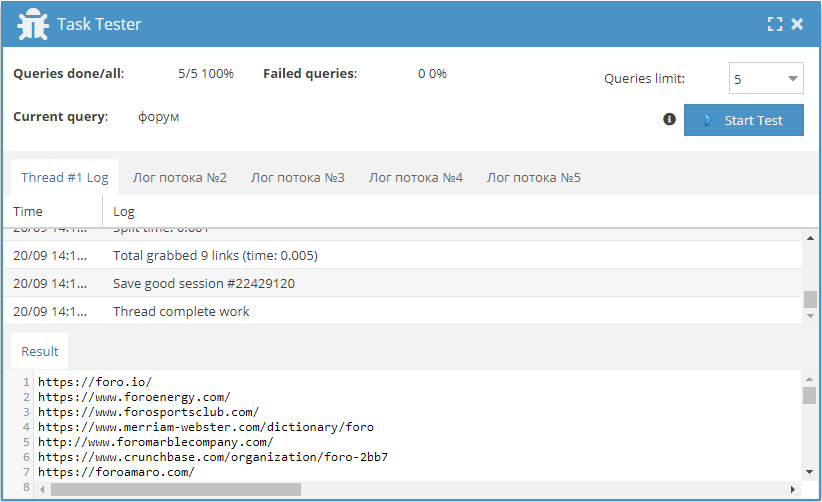
Test Scanning
The Test Scanning, tab allows you to perform test scanning to create and debug your own presets. Unlike the Task Editor, , you cannot use Constructors for requests and results here, nor use multiple scrapers, and macros, multi-level scanning, and other features supported in the Task Editor are not supported.
The section is designed based on the principle of a modular test, where individual scrapers can be tested. The entire workflow is displayed as a log, which allows you to get detailed information about the scraper's (preset's) operation, from sending the request to receiving the results:
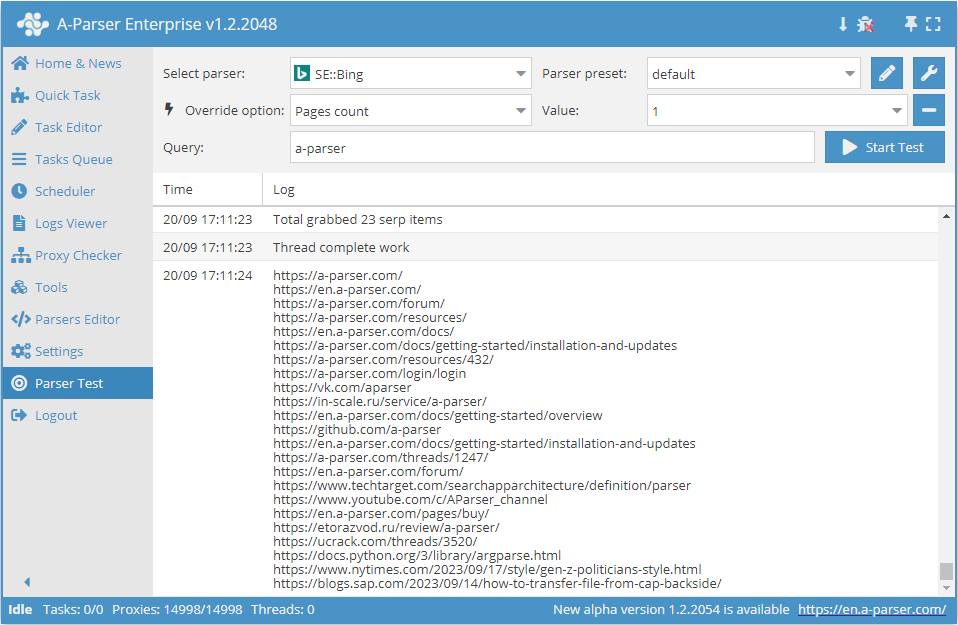
In "Test Scanning", there is a quick settings area: disabling autoscroll and enabling debug mode
By default, "autoscroll" is enabled, which means that as information is output to the log, we will automatically move down
When "autoscroll" is disabled, the icon changes its appearance, which means that as information is output to the log, we will remain in place; there will be no automatic movement down
By default, debug mode is disabled, which means that general information about the scanning will be output to the log.
When we activate debug mode, the icon changes its appearance, and detailed scanning information will be output to the log.
In the log window with debug mode enabled, we see detailed parsing information:
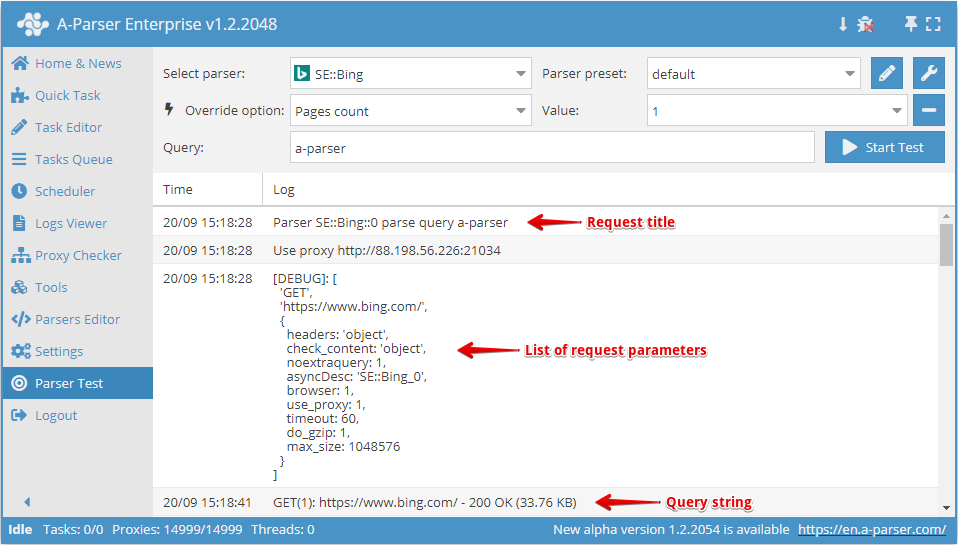
In the request section, we can see:
- Request name
- The request string that is sent to the server
- A list of parameters that are sent along with the request (headers, encoding, filters, etc.)
In the response section we receive from the server, we see the following information:
See in debug window - link to the window where the page obtained as a result of the request is displayed
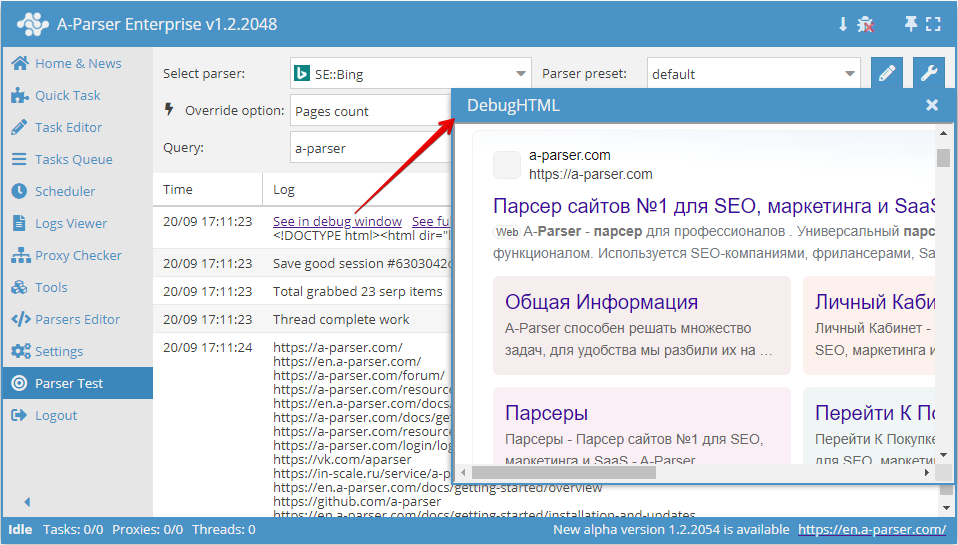
See full data - link to the window with the source code obtained as a result of the request
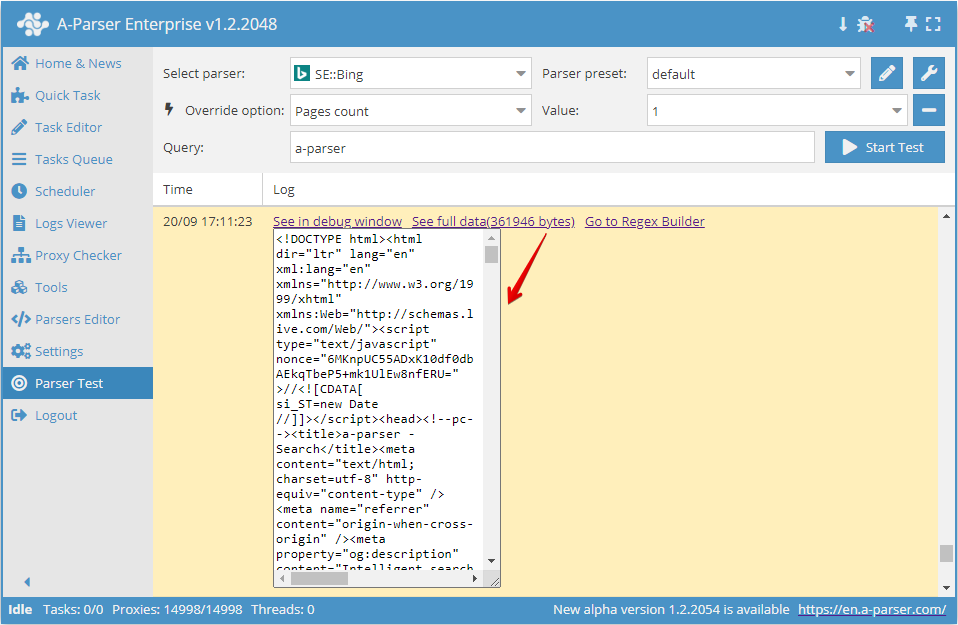
Go to Regex Builder - link to the Regular Expression Constructor with the source code obtained as a result of the request
If the "autoscroll" mode is created more for viewing convenience, the "debug" mode is an indispensable tool for debugging your own scrapers and presets. By analyzing the information obtained from the log in "debug" mode, we can see at what stage and what happens during the execution of the task, how the request is formed, and what the scraper receives in response.